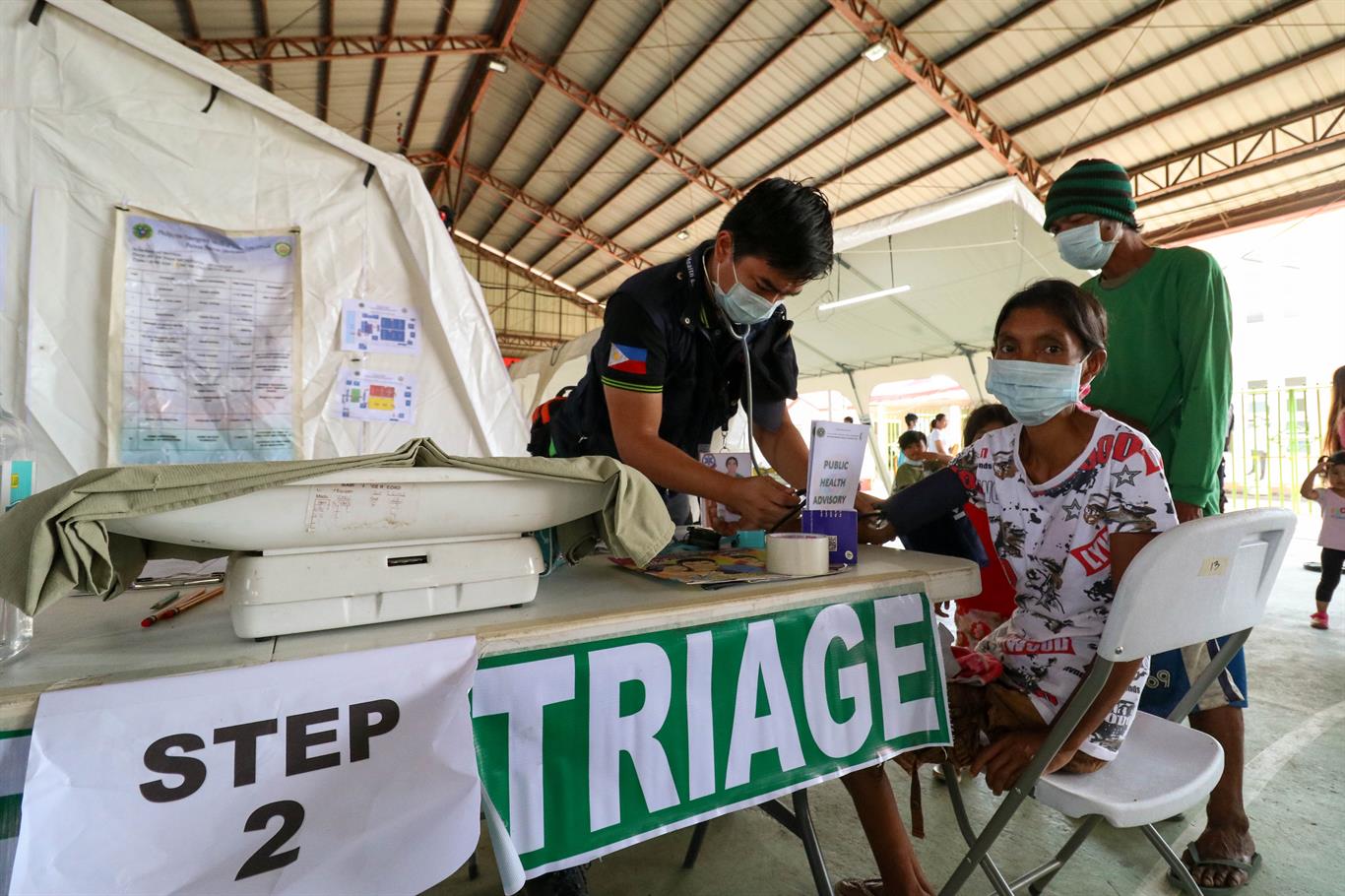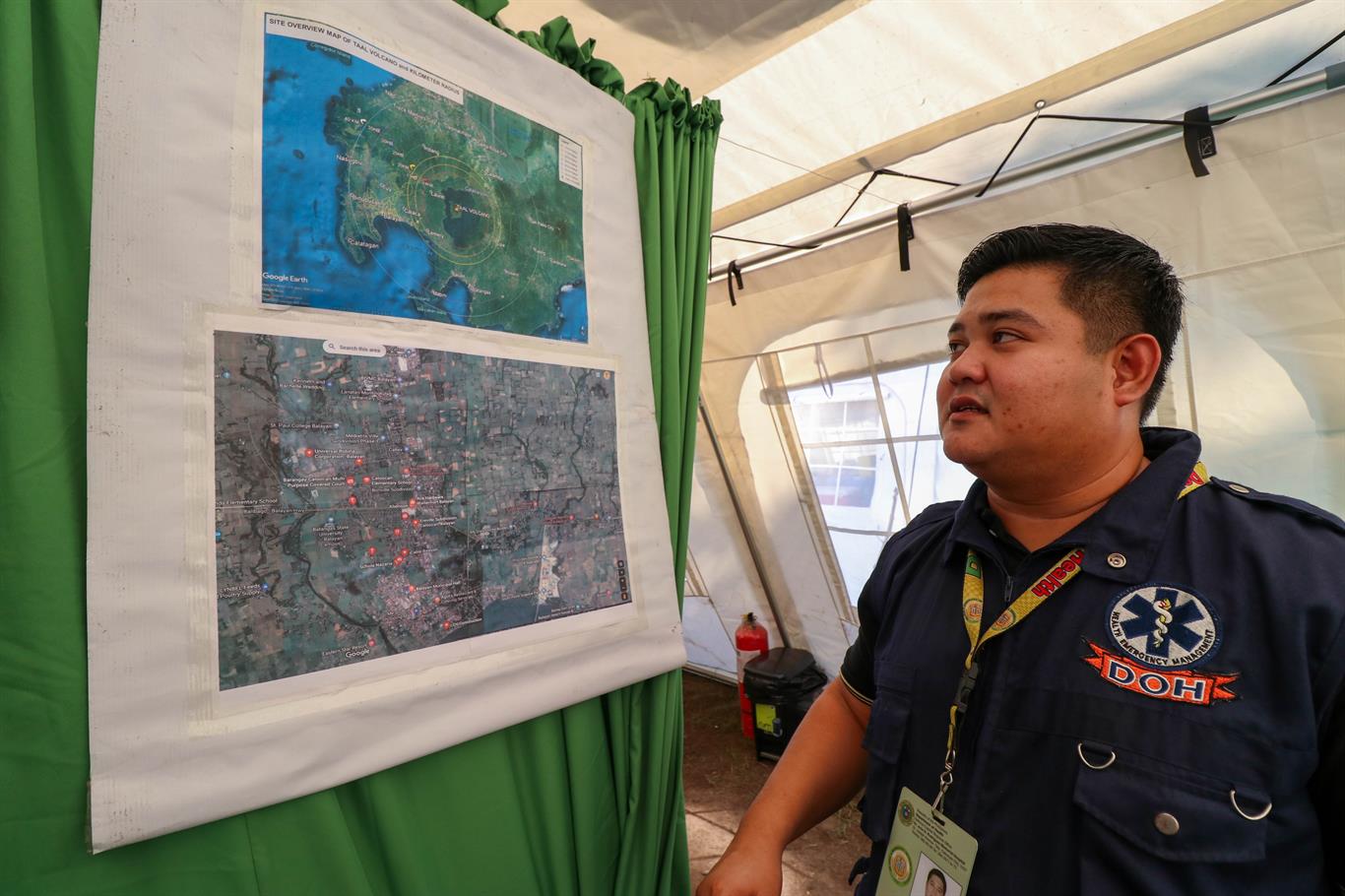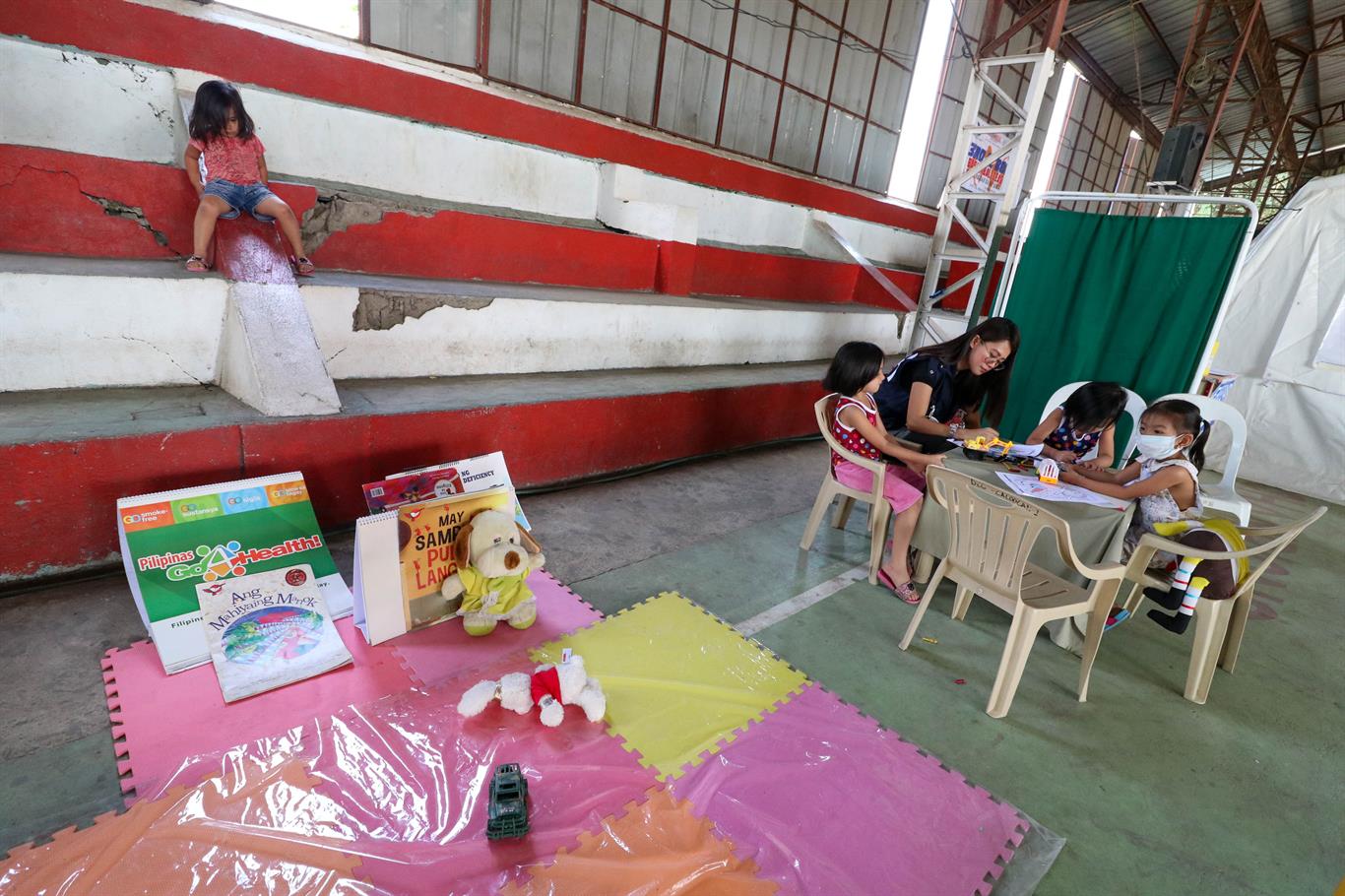On 12 January 2020, Taal Volcano in Batangas, Philippines erupted and spewed ash across various parts of Luzon, including Calabarzon and Metro Manila. The Philippine Institute of Volcanology and Seismology (PHIVOLCS) raised the alert level to 4, warning that a hazardous explosion was possible within days or hours. The eruption blanketed in ash the areas on the windfall of Taal Volcano, with many people exposed to the health risk of inhaling ash particles as well as injuries and other health issues.
The Philippine Emergency Medical Assistance Team (PEMAT), led and coordinated by the Department of Health with support from the World Health Organization, answered the call to augment the health response during the Taal Volcano eruption. Emergency medical teams from the Dr Jose N. Rodriguez Memorial Hospital and Sanitarium (DJNRMHS) in Caloocan City in Metro Manila and the Jose B. Lingad Memorial Regional Hospital (JBLMRH) in San Fernando, Pampanga in Central Luzon were deployed to Batangas.

A health worker checks the blood pressure of a patient in Balayan, Batangas. Photo: WHO/F. Tanggol
The team from JBLMRH arrived in Sto. Tomas, Batangas on 15 January, with two rounds of deployment of 17 staff during the first round for 10 days and 18 staff on the second round for 8 days. Meanwhile, the team from DJNRMHS arrived in Balayan, Batangas on 17 January with 27 staff for 14 days. Both teams ended their deployment on 30 January.
The health personnel were composed of doctors, nurses, midwives, pharmacists, medical technicians, social workers, logisticians, pharmacists, and administrative staff. Self-sufficiency is crucial during deployment, so the teams brought with them all their needs – from the tents, water supply, generators, beds, medicines, and equipment.
Before being deployed, DOH and WHO trained the emergency medical teams to ensure they adhere to the EMT minimum standards set by WHO and its partners. We talked to Eric John Capito, the nurse leading the emergency medical team of the Dr Jose N. Rodriguez Memorial Hospital and Sanitarium as they neared the end of their deployment for the Taal Volcano response. Eric was also one of the facilitators during the training for the emergency medical teams.

Eric John Capito, the team lead for the Dr Jose N. Rodriguez Memorial Hospital and Sanitarium emergency medical team, looks at a map inside the emergency operations center set up in Balayan, Batangas. Photo: WHO/F. Tanggol
“This event is the first real deployment for the emergency medical teams and at the same time, the team members were also testing what they learned during their training” said Eric.
Upon their arrival in Batangas, the teams set up their own tents and divided them in different areas such as the emergency operations center, triage, obstetrician-gynaecology, laboratory, pharmacy, child-friendly space, sleeping quarters, mess hall, among others. As they opened their medical services in Batangas, there was an immediate surge of patients which challenged the teams. The collective teams from DJNRMHS and JBLMRH saw nearly 2,000 patients during the duration of their deployment in Batangas. The largest age group they saw were adults aged 18-64 years old. Many of the patients came in for consulting due to symptoms of respiratory infection.

A child-friendly space in the emergency medical team set up in Balayan, Batangas. Photo: WHO/F. Tanggol
“The PEMAT can handle a minimum of 100 patients a day for 14 days. So, when we had 165 patients on day two, it was a challenge. We had to adjust the protocol and patient flow. We also had fast moving medicines and supplies. Once our stock reaches 50%, we should have the replenishment coming in already,” Eric shared.
They were able to address these challenges through the support of partners. The local government of Balayan supported them by providing barangay health workers to manage the surge of patients. Aside from the hospital, the local government and the Department of Health at the central office and Calabarzon regional office provided additional medicine stocks and supplies.

A pharmacist from the Jose B. Lingad Memorial Regional Hospital emergency medical team (center) manages their stock of medicines during deployment in Sto. Tomas, Batangas. Photo: WHO/F. Tanggol
During deployment, the emergency medical team also experienced ash fall and an earthquake. They were able to cope with the ash fall because they had the N95 mask which they used for the health personnel and patients. As for the earthquake, they planned for it.
“When we arrived here, we immediately had an operations planning, including the conduct of a surprise earthquake drill beforehand. So we were able to practice and we know the evacuation area where we will go, lessening the panic and anxiety of our team members,” explained Eric.
The Philippine Emergency Medical and Assistance Teams from Dr Jose N. Rodriguez Memorial Hospital and Sanitarium, Jose B. Lingad Memorial Regional Hospital and another one from the Eastern Visayas Regional Medical Center in Tacloban are up for certification and verification to be part of the WHO Global EMT Registry. If certified, the teams may be deployed in a limited surge capacity to health emergencies around the world.
“Our goal is to be certified this year. We still need some improvement in terms of the logistics, as some equipment are expensive to purchase costing up to millions of pesos. For example, we need a water bladder with the filter, so we can have potable drinking water if we’re unable to tap from the area’s available water supply. But it’s already being planned for purchase as part of the hospital’s procurement management plan,” he said.
As they wrapped up their day, Eric acknowledged the support of the local government and the hospital administrators as well as the commitment of fellow health personnel in the emergency medical teams.
“The cohesiveness of the team is important. It would be difficult to get certified as part of the WHO Emergency Medical Teams if there’s a break down of the team and if we have different objectives. So the commitment of the team and the leadership needs to be there,” Eric concluded.
